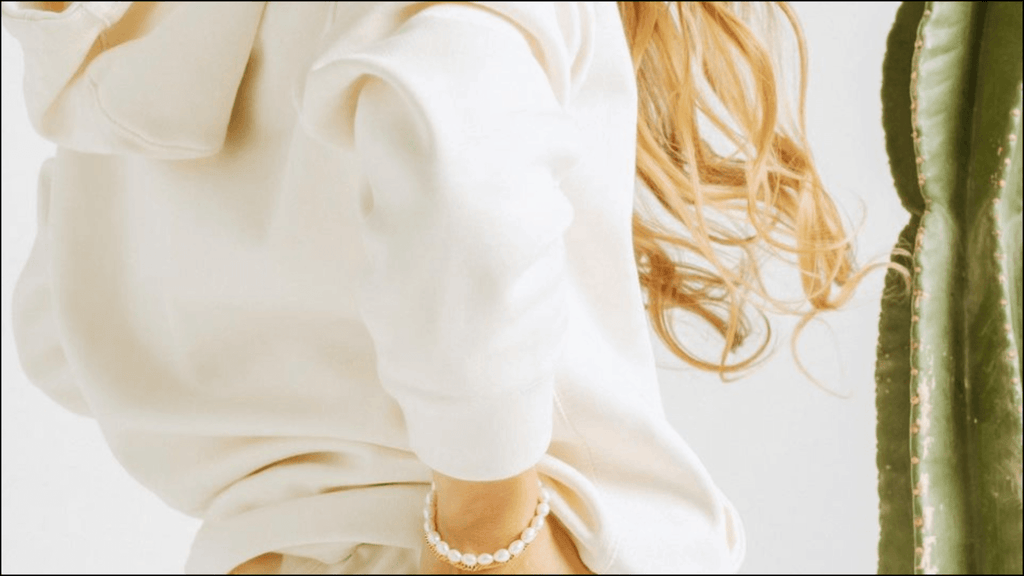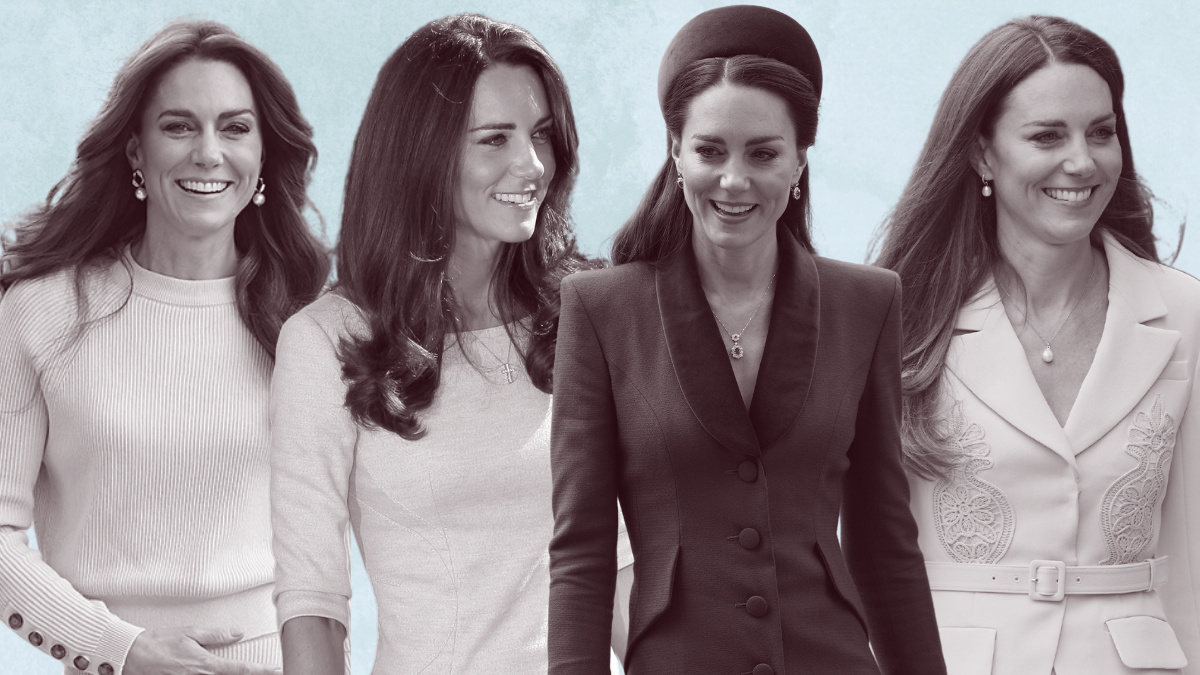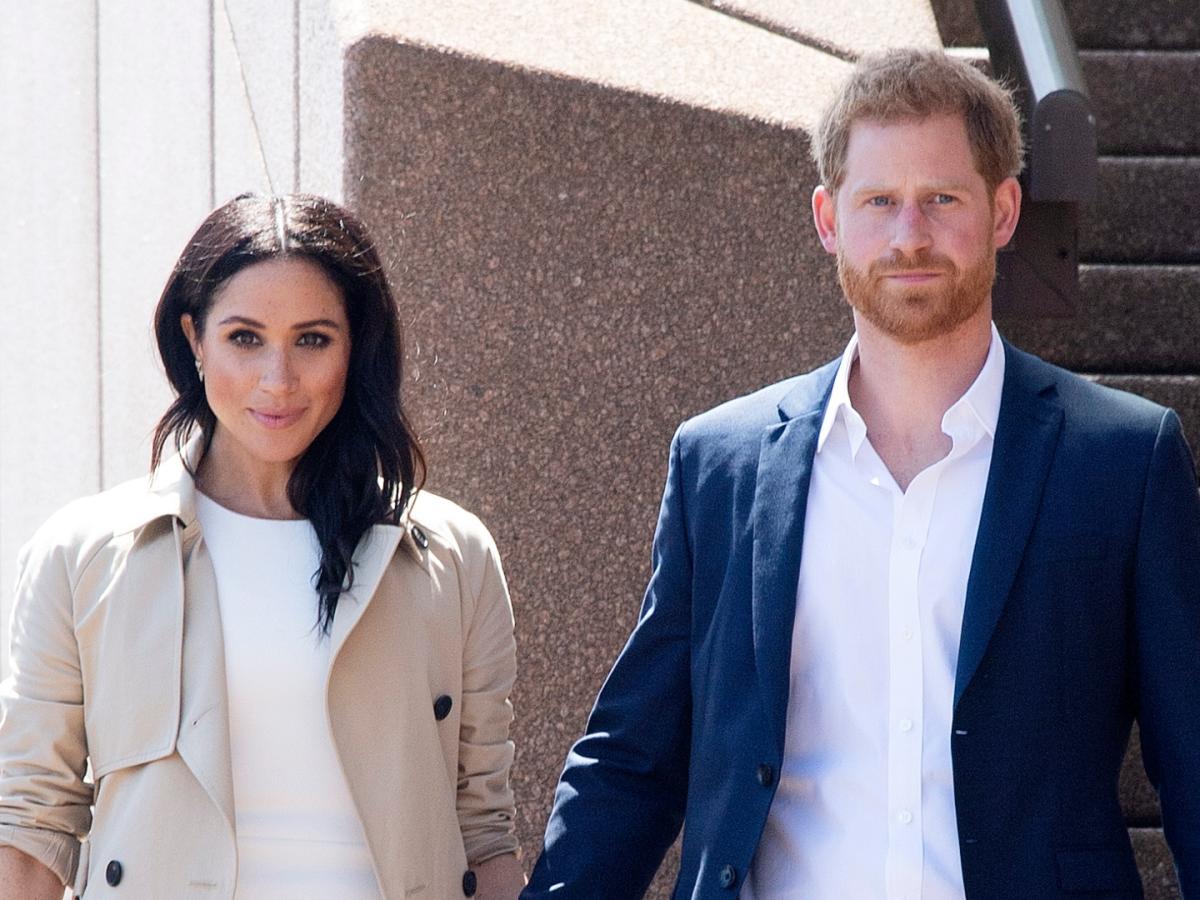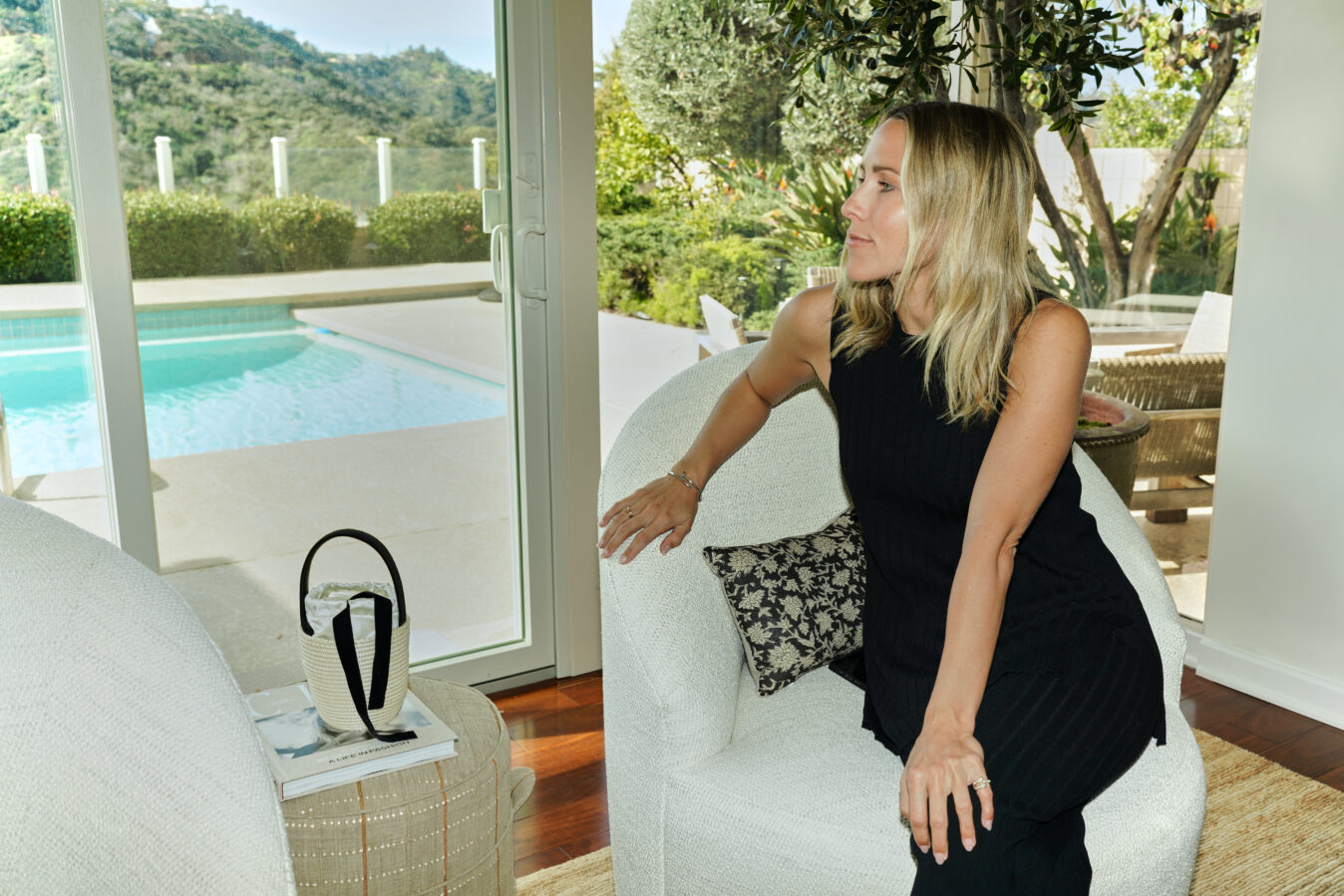Table of Contents
I get a lot of startup founders wanting to make custom t-shirts. And when I suggest they go the organic cotton t-shirt wholesale route, so they can buy t-shirt blanks for a fraction of the price it would cost to develop them from scratch… their answer is usually, “Absolutely not.” “My brand is special,” they say. “My brand needs a custom fit and will have only premium fabrics. No one will take my brand seriously if I use pre-made shirts.”
But as someone who has been in this industry for well over a decade, I can tell you that this mindset is so, so wrong.
Learning how to understand the world of t-shirt blanks could be the difference between a brand that launches and is successful for years to come, and a brand that fizzles out before they get their first sale.
So, if you have been thinking about starting a sustainable t-shirt brand, this post will cover everything you are going to need to know.
What You’ll Learn:
- My inspiration for this post (because I know some of you like hearing the tea before I get into the fashion details)
- What are blanks, and how are they used in the industry
- The pros of using blanks
- The cons of using blanks
- Looking for blanks? – here is who I recommend
I DIDN’T REALIZE I WAS ON THIS T-SHIRT SUPPLIER’S RADAR . . .

Oh, little old me?
Even though I should kind of be used to it by now, I still get surprised when people know who I am. A little bit ago, I even got stopped on my run because someone recognized me.
Anyway.
I get so many spammy emails from brands asking me to feature them on the blog. And I rarely respond. I just delete them. Because, honestly, they are a bunch of buzzwords and greenwashing. You know the type – we invented the most sustainable hoodie ever, and our clothes empower women . . . buzzword, buzzword, buzzword.
But the other day, I got excited when I recognized the brand on the other end of the email for once – Original Favorites. Because, for years, I have recommended that my clients and students check out Original Favorites for organic cotton blanks.
SO, WHAT ARE T-SHIRT BLANKS?

Blanks are pretty much what they sound like. Blank garments that are ready for customizations like screen printing and or dying – they are literally a blank canvas.
It’s kind of like buying a 5-pack of Hanes Deep V-necks (literally my uniform in college, along with some Hard Tail leggings and Ugg boots). Except it’s on a bigger scale, A LOT cheaper, and blanks are intended for brands to purchase and customize.
How it all works is that a company, like Original Favorites, puts in a huge order for a few styles of t-shirt blanks. Because their order is so big, they get really good prices on the shirts throughout the entire supply chain. From fabric to sewing to shipping – the bigger the order, the better the prices. So, they take advantage of that.
They then pass on those giant bulk order savings to you and take a small cut.
So instead of you having to order tens or hundreds of thousands of the same shirt to get a good price, you can order just a few – like 10, and still get a much lower price than you would ever be able to get trying to produce 10 t-shirts on your own (I’ll break down the math in just a minute).
Blanks are made to be customized. So, you can add your own designs and even labels.
And the cool thing is, blanks aren’t just for t-shirts. You can buy blanks in almost any type of garment. Scarves, dresses, skirts, sweatpants, hoodies, polo shirts, tote bags – the options are limitless.
4 PROS OF USING T-SHIRT BLANKS

1. NO DEVELOPMENT COSTS
A lot goes into developing a single t-shirt. And if everything is custom, there isn’t much you can do to cut development corners. You need to source everything, have patterns made and graded, and have various samples made to check the fit. Then, you need to make sure there are no issues for your customer.
This gets pretty expensive, especially when you are making garments domestically. In the United States or Europe, this will all cost anywhere from about $400 – $1,000 just for a t-shirt. And developing more technical items could cost up to $3,000, depending on who you work with and how complex the garment is.
The other thing worth mentioning is that development costs are fixed. So it costs the same whether you develop 100 shirts or 10,000 shirts.
Here is how the development costs of a shirt break down…
For example, say it costs you $500 to do all the development work and perfect your t-shirt and you only want to make 50 pieces. And in production, each piece is $10.
Well, on top of the $10 production price, you would need to add in your development cost. So, $500 divided by 50 is $10. That means the real cost of each production piece is $10 plus $10 for development = $20 total.
Now, if you are making 1,000 pieces, we would take the $500 divided by 1,000 pieces, and the development cost per piece would be just 50 cents. So, your total unit cost would be $10 plus $0.50, which is a total of $10.50 per piece.
To be clear, I would never recommend a new startup brand buy 1,000 units on their first order. But hopefully, you get the point I am trying to make . . . development costs are costs that effect your bottom line, and they are expensive!
So, by using blanks, new brands can completely cut out that development cost, lower the overall cost of their product, and still get low MOQs (minimum order quantities).
2. NO SURPRISES
Even if you work with the best factories, I can promise you that things will not be perfect. In your sample and development process, there will always be small things you need to tweak or reevaluate. And that is exactly why you must have a development and sampling stage and can’t skip it.
One of the most disheartening things for new brands is when they finally open their box of samples after months of work and feel like everything is wrong.
Us industry pros know that it’s all part of the garment game – alterations need to be made and new samples need to be submitted for approval. But for newbies, it is sometimes so disheartening (and expensive) that they give up completely.
The other scary thing that sometimes happens is brands will think they have a perfect sample, place their production order, and then realize something is wrong after they receive their bulk order. Now, they have hundreds of defective t-shirts to deal with.
When you are buying t-shirt blanks, you know exactly what you are getting. You can buy a few (like 1 or 2), make sure you absolutely love them, and then buy larger quantities.
And the best part? Every time you reorder, you have the assurance that you are getting the exact same item because someone else is taking care of all the quality assurance for you.
3. THE BEST PRICING ON SMALL ORDERS
I already told you about how much money you can save in the development process by using t-shirt blanks. Now, let’s talk about how much more money you can save on production.
Here is the reality of fashion and the secret behind why fast fashion and other big brands can offer such low prices. The more you buy, the more you save.
That is for a few reasons.
Let’s start with the fabric. When you give a fabric mill a huge fabric order, they can program the machines once and let them run day and night (new fabric orders require cleaning the machine, re-programming the machine, and in general, a lot of downtime). It is extremely efficient to run just one fabric for a long time for big orders. And the more efficient you can be, the faster things can get made, and the more money you can save.
People become more efficient too
Garment sewing at a factory becomes more efficient with larger orders as well. Factories like big orders because it gives their workers time to get good at making your product. If you only want 50 pieces, by the time the workers find their groove, the order is done. But with an order of 10,000 pieces, every day, the workers get better and better at making the product from all of the repetition. They also get quicker, so you get a lower price.
Factory workers can go from making 15 pieces daily to 30 just by repetition and getting to know the product inside and out. On large orders, when workers become masters at making your product, the work becomes almost mindless for them. They can laugh, joke, and listen to podcasts while working.
So, when you order blanks, you get a product that’s been replicated many times and produced more cheaply, thereby cutting production costs for you and your customer. Versus placing a small custom order with a factory, which means garment sewing will take longer and production costs will be higher.
4. GREAT FOR RE-ORDERS
Worried about selling out fast and running out of product?
When you have a custom order and want to order more, it can take quite a bit of time. You first need to re-order the fabric, which can take anywhere from a month to 3 months. Then, the shirts need to be sewn, which could take another month or two.
With blanks, they are usually always in stock. So as soon as you need more, you can order them and get them immediately.
This can be great for customer retention because, the longer customers have to wait for a product on backorder, the less likely they are to place their order.
It’s also great for your cash flow because it allows you to get product out quickly and not tie it up while waiting for new items to be made.
2 MISCONCEPTIONS ABOUT USING T-SHIRT BLANKS

1. “NO CUSTOM FITS OR FABRICS MEANS MY CUSTOMER WON’T GET WHAT THEY NEED”
“But Melanie, I have done all the research, and know that the exact shirt I want to develop isn’t out there right now. There is a need for my custom design.”
Here is a hard dose of reality. I need you to check your ego and listen up.
I get that you want to make the same shirt you have in your closet, but you want the sleeves 1 inch longer, the body 2 inches shorter, and the fabric just slightly heavier. Because, then, it will fit you perfectly.
But here’s the thing. Most people who are buying your shirt do not have your exact measurements. When you make those sleeves 1 inch shorter, even though they’ll fit YOU perfectly, they might be way too short for someone else (read, a paying customer).
The truth is, blank companies have done all the research. They are so confident in their research that they’re ordering probably millions of units of the same style. They know what sells. Lean into that expertise.
“From operating their clothing brand, our founders realized the perennial items that sold-out every season were t-shirts and hoodies. They’re the most accessible styles for any demographic and often the most-worn and loved by customers. We expanded our fleece styles from there but never ventured too far away from the classics and never changed our silhouette.” Rachel, Original Favorties
What that means is that based on tons of sales data from their past and current businesses Orignal Favorites was able to assess what customer really want and make that.
2. “PEOPLE WILL THINK I’M NOT A ‘REAL’ BRAND”
Yes, you will. Period. Full stop.
If you are making printed t-shirts, all people really care about is the print or the logo. That is what they are buying.
I have one student in LMCL who started her business using a print-on-demand service (basically, a company that will print your designs on blanks). And, IMO, it was the smart thing to do.
While others were struggling with their first patterns, she was already testing product. And when her cohorts were finally just launching, she was already scaling and hiring her first employee.
The bottom line. Using this method allowed this student to launch and scale quickly, and her customers didn’t even know she was cutting design corners.
Think about it.
The last time you bought a shirt with a cute design on it, did you email the brand to confirm they paid for the development and design of the shirt? No. Because that would be bananas. So, if you don’t shop that way, why do you think your customers would?
I’m telling you, top brands do this to make their lives easier – and you should be considering it too!
The other cool thing with blanks is that with a lot of them, their labels are meant to be ripped out, so you can sew in your own brand label. If you sew in your own label, this gives the final product a more branded and polished look.
MY FAVORITE T-SHIRT BLANK SUPPLIERS

Okay, now that you know all of the pros and cons of using shirt blanks and why I love them, here are a few of my favorites (move over Gildan and Bella Canvas) for women, men, unisex,and even kids!
But one last tip before I go. With blanks fiber content is important for the type of printing you plan to use. If you want sublimation printing for vivid colors and detailed photoreal designs, you will probably need to use 100% polyester. So, if an eco product is what you’re after, screen prints, and some types of digital prints can be done on blends and pure cotton.
ORIGINAL FAVORITES
Organic cotton and Supima blank options at competitive prices. And, with this brand, you don’t have to stress about your supply chain practices because you know you are getting sustainable t-shirt blanks!
Bonus, they have pre-vetted resources to help you customize your blank apparel, like printers, dyers, and more!
PS – Did you like the blanks in the pictures on this post? They are all from Orginal Favorties!
HEA NOW
Because they work with Chetna farms (which I love), these blanks are made using Indian Chetna 100% cotton, which is not just organic but also biodynamic!
And, they even come in different colors to choose from, so you can skip the garment dying and print right on top
CREATE FASHION BRAND
For my European readers. These are some of the best quality blanks you can get in Portugal. They are known for their heavy cotton jersey fabric options. And as an added bonus, they even do low MOQ custom orders!
DHARMA TRADING
For everything blanks and wholesale clothing, not just short sleeve t-shirts – I’m talking dresses, scarves, tank tops, etc. So much blank variety on this site!
WHAT DO YOU THINK?
Are you going to give blanks a try for your startup clothing brand? Let me know in the comments!






